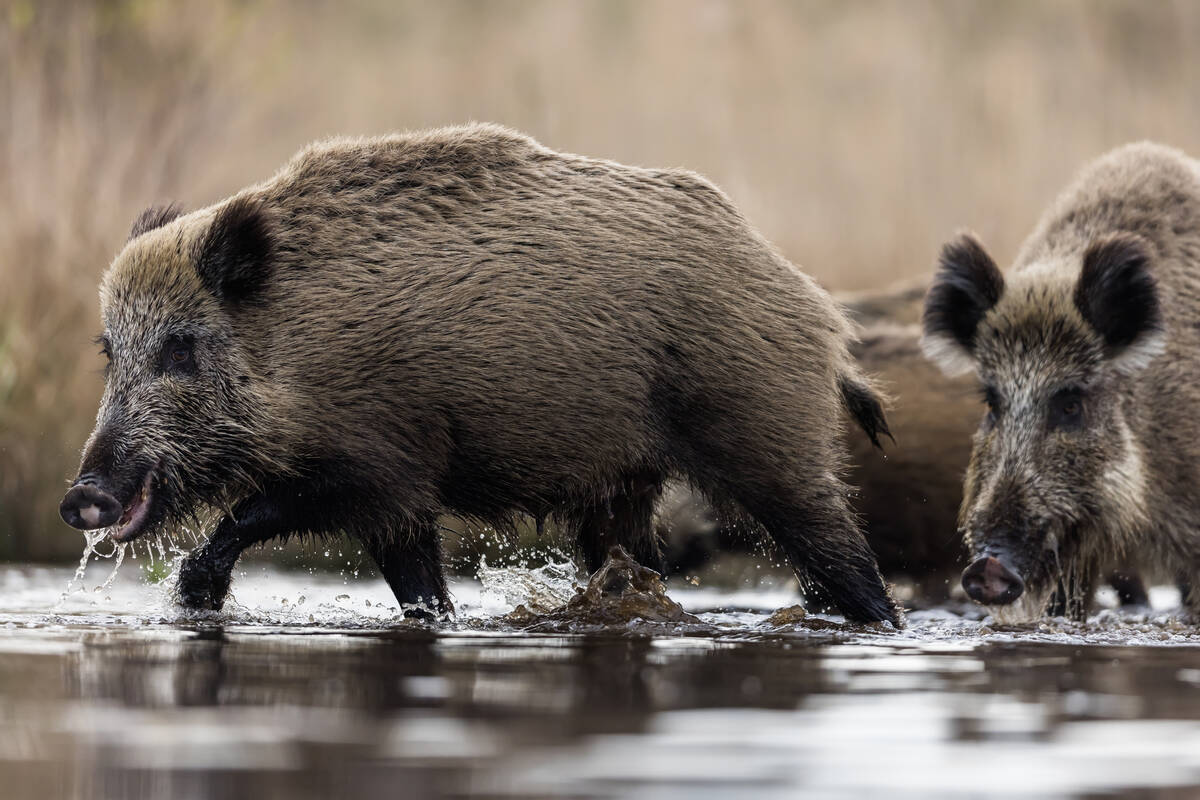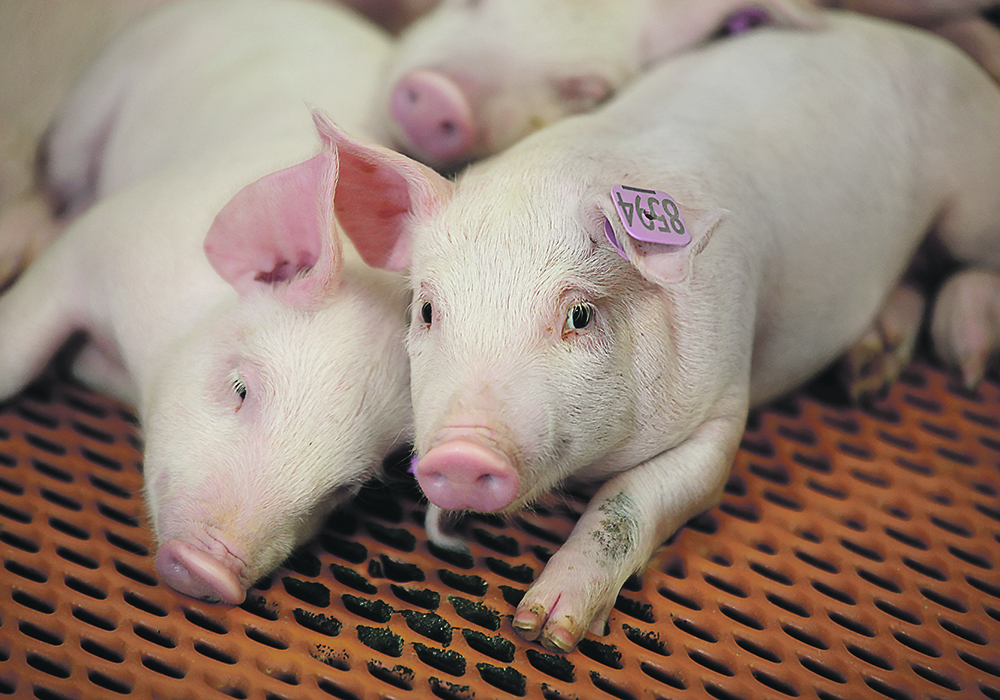Porcine epidemic diarrhea is a viral diarrhea that has a high mortality rate in young piglets and production losses in the range of 10 percent of a farm’s annualized hog sales.
Over the past two months, Manitoba has experienced a large outbreak of PED. This is not a new phenomenon for Manitoba, which has experienced similar disease breaks every other year for several years.
What makes the recent epidemic different is the time of year. Previously, the majority of PED circulated in late spring, summer and fall. We now have significant viral diarrhea occurring in a season that we cannot rely on warm weather to help heat, dry, contain and eliminate the virus from farm and farm transport systems.
Read Also

Manitoba bans wild boar possession
Manitoba has tightened the regulatory status of Eurasian wild boar in an effort to help fight back against invasive wild pigs.
Here are two biosecurity principles and strategies we feel are important for slowing the spread of disease.
Confirm the disease-free status of your animals before transporting
Like many viral diseases, pigs begin shedding virus in their manure before developing noticeable diarrhea. This has led to several instances in which infected farms transported pigs that subsequently infected a new premise. While the diarrhea is severe in young pigs, all pigs are susceptible, and older growing pigs and mature sows may develop only transient diarrhea or soft stools. This can be camouflaged in “normal” sporadic soft stools and an early PED infection can be missed.
With the cold weather Manitoba experiences in winter, many finishing barns have some level of humidity and fog, which makes observations of subtle manure changes challenging. Farms in high-risk areas with PED-positive neighbours are encouraged to test before moving pigs, be that to the next stage for growing, or to the processing plant.
Many producers found their transport trucks exposed to the virus at the slaughter plant after backing up to a dock that had received pigs from an “unknown” positive farm.
Know your weaknesses and address them
The PED virus needs to be eaten by a susceptible pig for the infection to occur. This means if we can keep the virus out of the barn, the infection is prevented.
It sounds simple, but obviously we fail, a lot. It is often said that a virus walks into the barn, either on two feet (people) or four feet (pigs). The significant high-risk period for either to occur is when we crack the load-out door to receive or ship pigs. This interface of the “clean” pig-side of the barn with the “dirty” outside world may result in a transmission of virus. Many pig transport trailers are either baked (at 70 C for 20 minutes after washing and disinfecting) or at the minimum, dried at room temperature with some forced air.
Freezing a trailer (which occurs within minutes of exiting a washbay) does not kill any pathogens. Instead it keeps them viable, waiting for a thaw event.
Once baked, we need to get our clean trailer back to the farm to load with animals. This can potentially re-introduce pathogens to the trailer, simply by driving down mucky roads where road “mist” or debris can seep into the trailer through gaps, cracks and non-sealed doors. This road debris coating the back of the trailer and bumpers directly contacts the barn loadout chute. Once the door is opened to the barn, pigs being loaded (or unloaded) will walk across the contaminated bumper. We recommend thoroughly soaking the rear of the trailer and bumper with a non-freezing solution of disinfectant and allow appropriate contact time for the disinfectant to be effective before opening doors and loading.
Another issue that arises at this clean-dirty interface is the negative static pressure we create with barn exhaust fans. Fans pull out warm, humid barn air, creating a vacuum, which in turn pulls in the cold, dry fresh outside air through attic inlets. In winter, we reduce attic inlet space to restrict how much cold air we allow into the barn. While this keeps the barn warmer and reduces heating costs, it also tends to increase the negative static pressure (suction). When we do open doors like the load-out chute door or the dead-stock removal door, the barn will “suck” in whatever is on the door frame, ramp or in the trailer backed up to the barn.
It is advisable to disinfect the ramp/chute, door frame and bumper pad before loading pigs. If possible, create a positive pressure within the load-out chute (or load-out room) to blow up and out rather than suck in bedding and road debris.
Maintaining the positive pressure the entire time the load-out door is open is critical. It is important to have people doing the loading to use dedicated boots that do not leave the load-out area. As well, they should use dedicated wash wands in the load-out area, and wash, disinfect and dry the loadout immediately after using it.
People should not step onto the trailer when loading pigs up the ramp, and they should really understand exactly where the clean-dirty interface starts and stops.
We know there are many other ways that farms are becoming infected. Area spread through wind has been hypothesized in some instances where there had not been any breech in the load-out dock door.
Likewise, we continue to look at how best to decontaminate supplies, tools and equipment before entering into the barn.
Proper people entrances are critical to prevent those two-footed creatures from being part of the problem.
If farms do not have proper showers and changing areas, then at minimum, they should require a change of footwear at a physical step-over barrier to demarcate the clean-dirty interface.
We continue to learn lessons from each PED break and strive to address biosecurity risks that we identify to prevent the next one.
Blaine Tully is a veterinarian and owner of Swine Health Professionals Ltd. in Steinbach, Man.















